-
 Bitcoin
Bitcoin $118000
0.67% -
 Ethereum
Ethereum $3750
0.71% -
 XRP
XRP $3.183
1.61% -
 Tether USDt
Tether USDt $1.000
-0.01% -
 BNB
BNB $788.1
1.21% -
 Solana
Solana $186.0
0.85% -
 USDC
USDC $0.9999
-0.02% -
 Dogecoin
Dogecoin $0.2373
1.25% -
 TRON
TRON $0.3204
1.76% -
 Cardano
Cardano $0.8266
1.85% -
 Hyperliquid
Hyperliquid $44.04
1.28% -
 Sui
Sui $4.192
5.88% -
 Stellar
Stellar $0.4399
2.63% -
 Chainlink
Chainlink $18.40
1.19% -
 Hedera
Hedera $0.2842
9.06% -
 Bitcoin Cash
Bitcoin Cash $560.5
2.46% -
 Avalanche
Avalanche $24.99
4.58% -
 Litecoin
Litecoin $114.5
1.25% -
 UNUS SED LEO
UNUS SED LEO $8.980
-0.03% -
 Shiba Inu
Shiba Inu $0.00001406
0.53% -
 Toncoin
Toncoin $3.306
4.27% -
 Ethena USDe
Ethena USDe $1.001
0.03% -
 Polkadot
Polkadot $4.169
2.37% -
 Uniswap
Uniswap $10.56
1.95% -
 Monero
Monero $322.8
1.06% -
 Dai
Dai $0.0000
0.00% -
 Bitget Token
Bitget Token $4.545
0.12% -
 Pepe
Pepe $0.00001261
1.29% -
 Aave
Aave $296.5
1.27% -
 Cronos
Cronos $0.1379
5.90%
How does sharding improve mining efficiency?
Sharding boosts mining efficiency by allowing parallel transaction processing, reducing computational load, and potentially increasing rewards for miners on sharded blockchains.
Apr 10, 2025 at 06:35 pm
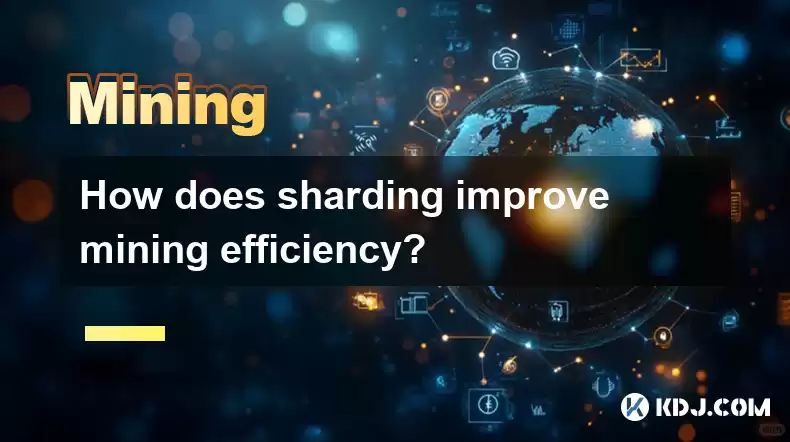
Sharding is a significant technological advancement in the realm of blockchain and cryptocurrencies, particularly aimed at enhancing the scalability and efficiency of mining operations. By breaking down a blockchain network into smaller, manageable pieces called shards, sharding allows for parallel processing of transactions and blocks. This article delves into how sharding improves mining efficiency, exploring its mechanisms, benefits, and practical implications within the cryptocurrency ecosystem.
Understanding Sharding in Blockchain
Sharding is a database partitioning technique that splits a blockchain's entire network into smaller segments, or shards. Each shard contains its own independent state and transaction history, allowing it to process transactions and execute smart contracts autonomously. This division of labor means that instead of every node on the network processing every transaction, nodes can focus on the transactions within their assigned shard.
The primary goal of sharding is to increase the throughput of the blockchain, enabling it to handle more transactions per second (TPS). By distributing the workload across multiple shards, the network can process transactions in parallel, significantly reducing the time required to confirm transactions and add them to the blockchain.
How Sharding Enhances Mining Efficiency
Mining efficiency is directly impacted by sharding through several mechanisms. Firstly, sharding reduces the computational load on individual nodes. In a non-sharded blockchain, every miner must process every transaction, which can be resource-intensive and time-consuming. With sharding, miners only need to process transactions within their assigned shard, allowing them to operate more efficiently.
Secondly, sharding increases the overall capacity of the network. By enabling parallel processing, the network can handle a higher volume of transactions, which means miners can potentially mine more blocks in the same amount of time. This increased throughput can lead to higher rewards for miners, as they can process and validate more transactions.
Lastly, sharding can reduce the energy consumption associated with mining. Since miners are only processing a subset of the network's transactions, they require less computational power and, consequently, less energy. This can make mining more sustainable and cost-effective, particularly for smaller miners who may not have access to large-scale mining operations.
Practical Implementation of Sharding in Mining
Implementing sharding in a mining context involves several steps and considerations. Here's a detailed look at how miners can adapt to a sharded blockchain:
Choose a Sharded Blockchain: Miners must first select a blockchain that supports sharding, such as Ethereum 2.0 or Zilliqa. These blockchains have implemented sharding to improve scalability and efficiency.
Set Up Mining Software: Miners need to configure their mining software to work with the sharded blockchain. This may involve updating existing software or installing new software specifically designed for sharded networks.
Assign to a Shard: Once the software is set up, miners will be assigned to a specific shard. This assignment is typically managed by the blockchain's consensus mechanism, which ensures an even distribution of miners across shards.
Process Transactions: Miners will then begin processing transactions within their assigned shard. They will validate transactions, create blocks, and add them to the shard's blockchain.
Communicate with Other Shards: While miners primarily focus on their shard, they must also communicate with other shards to ensure the overall integrity of the network. This involves cross-shard communication protocols that allow for the transfer of assets and data between shards.
Earn Rewards: Miners earn rewards for successfully mining blocks within their shard. These rewards can be in the form of the blockchain's native cryptocurrency or transaction fees.
Benefits of Sharding for Miners
Sharding offers several benefits for miners, enhancing their overall efficiency and profitability. One of the most significant advantages is the reduced computational load. By only processing transactions within their shard, miners can use less powerful hardware, which can lower the entry barrier for new miners and make mining more accessible.
Another benefit is the potential for increased rewards. With sharding, the network can process more transactions, leading to more blocks being mined and more rewards being distributed. This can be particularly beneficial for miners who operate on a smaller scale, as they can still earn competitive rewards without the need for large-scale mining operations.
Additionally, sharding can improve the security of the network. By distributing the workload across multiple shards, the network becomes less vulnerable to attacks, as an attacker would need to compromise multiple shards simultaneously to disrupt the network. This increased security can provide miners with greater confidence in the stability and reliability of the blockchain.
Challenges and Considerations
While sharding offers significant benefits, it also presents several challenges and considerations for miners. One of the main challenges is the complexity of managing a sharded network. Miners must be able to navigate the intricacies of cross-shard communication and ensure the integrity of their shard's blockchain.
Another consideration is the potential for uneven distribution of mining power across shards. If certain shards attract more miners than others, it could lead to imbalances in the network's overall performance and security. Miners must be aware of these dynamics and adapt their strategies accordingly.
Furthermore, the transition to a sharded blockchain may require significant investment in new hardware and software. Miners must carefully evaluate the costs and benefits of adopting sharding and ensure that they have the resources and expertise to make the transition successfully.
Frequently Asked Questions
Q: Can sharding be implemented on any blockchain?
A: Sharding is a complex technology that requires significant changes to a blockchain's architecture. While it can be implemented on many blockchains, it is not suitable for all. Blockchains with simpler architectures or those that prioritize other features, such as privacy, may find it challenging to implement sharding effectively.
Q: How does sharding affect the decentralization of a blockchain?
A: Sharding can potentially impact the decentralization of a blockchain, as it requires nodes to focus on specific shards rather than the entire network. However, if implemented correctly, sharding can maintain or even enhance decentralization by distributing the workload more evenly across the network.
Q: What are the risks associated with sharding for miners?
A: The main risks for miners include the complexity of managing a sharded network, potential imbalances in mining power across shards, and the costs associated with transitioning to a sharded blockchain. Miners must carefully assess these risks and ensure they have the necessary resources and expertise to navigate them.
Q: How does sharding impact the security of a blockchain?
A: Sharding can improve the security of a blockchain by distributing the workload and making it more difficult for attackers to compromise the network. However, it also introduces new security challenges, such as the need for robust cross-shard communication protocols and the potential for shard-specific vulnerabilities.
Disclaimer:info@kdj.com
The information provided is not trading advice. kdj.com does not assume any responsibility for any investments made based on the information provided in this article. Cryptocurrencies are highly volatile and it is highly recommended that you invest with caution after thorough research!
If you believe that the content used on this website infringes your copyright, please contact us immediately (info@kdj.com) and we will delete it promptly.
- Meme Coins in July 2025: Bitcoin Takes a Backseat?
- 2025-07-27 10:30:12
- HIFI Price Eyes Breakout: Downtrend Line in the Crosshairs?
- 2025-07-27 10:30:12
- Troller Cat's Meme Economy Prowess: Presale ROI and Viral Domination
- 2025-07-27 10:50:12
- Bitcoin Price Tumble: Chart Patterns Point Downward?
- 2025-07-27 10:50:12
- Ethereum's Bullish Case: Flag Pattern Points to $4,800?
- 2025-07-27 11:10:18
- Ethena (ENA) & Anchorage Digital: A Genius Partnership Sparking a Stablecoin Revolution
- 2025-07-27 11:10:18
Related knowledge
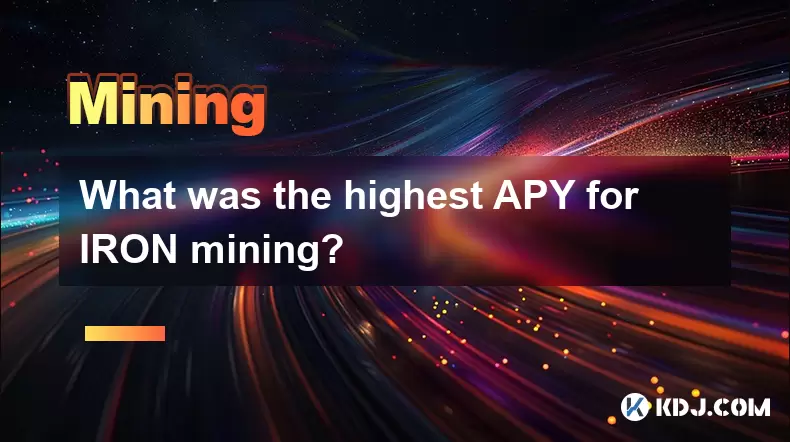
What was the highest APY for IRON mining?
Jul 23,2025 at 05:14am
Understanding IRON Token and Its Mining MechanismThe IRON token is a stablecoin that operates within the Iron Finance ecosystem, primarily on blockcha...

What is impermanent loss in IRON pools?
Jul 23,2025 at 09:00am
Understanding Impermanent Loss in the Context of IRON PoolsImpermanent loss is a phenomenon that affects liquidity providers in decentralized finance ...
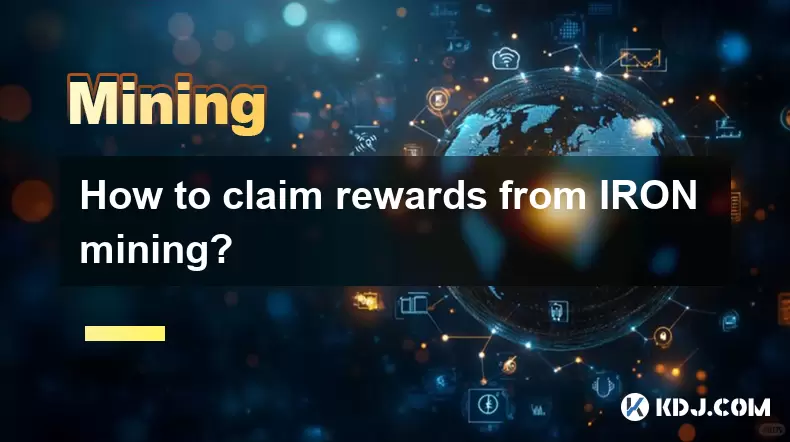
How to claim rewards from IRON mining?
Jul 23,2025 at 02:21pm
Understanding IRON Mining and Reward MechanismsIRON Finance operated as a decentralized finance (DeFi) protocol on the Polygon and Binance Smart Chain...

IRON mining tutorial for beginners
Jul 27,2025 at 12:01am
What Is IRON and How Does It Work in the Cryptocurrency Ecosystem?IRON is a cryptocurrency token that operates on the Binance Smart Chain (BSC) and is...
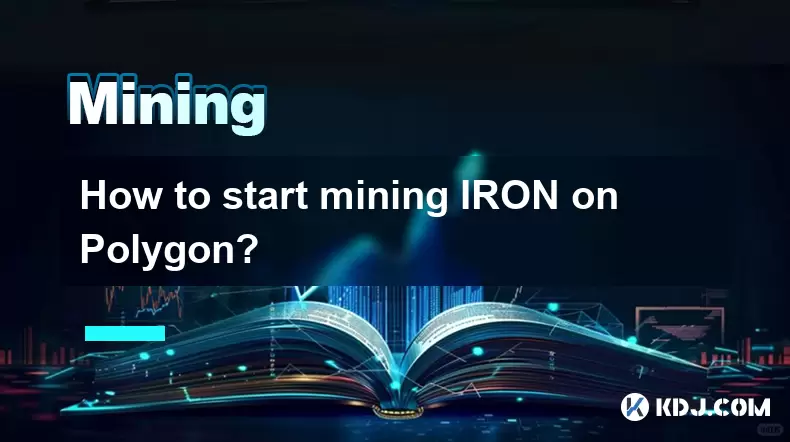
How to start mining IRON on Polygon?
Jul 23,2025 at 08:00pm
Understanding IRON and Its Role on PolygonIRON is a decentralized, algorithmic stablecoin designed to maintain a 1:1 peg with the US dollar. It operat...
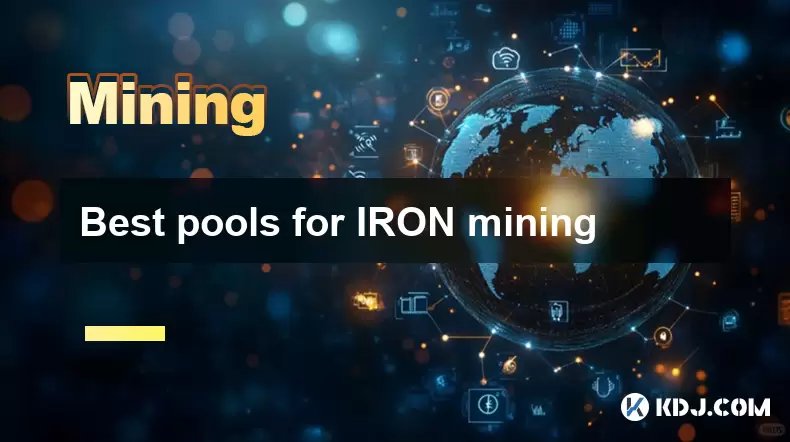
Best pools for IRON mining
Jul 26,2025 at 03:56am
Understanding IRON Mining and Its Unique MechanismIRON (Iron Finance) was a decentralized finance (DeFi) project that aimed to create a multi-chain al...

What was the highest APY for IRON mining?
Jul 23,2025 at 05:14am
Understanding IRON Token and Its Mining MechanismThe IRON token is a stablecoin that operates within the Iron Finance ecosystem, primarily on blockcha...

What is impermanent loss in IRON pools?
Jul 23,2025 at 09:00am
Understanding Impermanent Loss in the Context of IRON PoolsImpermanent loss is a phenomenon that affects liquidity providers in decentralized finance ...

How to claim rewards from IRON mining?
Jul 23,2025 at 02:21pm
Understanding IRON Mining and Reward MechanismsIRON Finance operated as a decentralized finance (DeFi) protocol on the Polygon and Binance Smart Chain...

IRON mining tutorial for beginners
Jul 27,2025 at 12:01am
What Is IRON and How Does It Work in the Cryptocurrency Ecosystem?IRON is a cryptocurrency token that operates on the Binance Smart Chain (BSC) and is...

How to start mining IRON on Polygon?
Jul 23,2025 at 08:00pm
Understanding IRON and Its Role on PolygonIRON is a decentralized, algorithmic stablecoin designed to maintain a 1:1 peg with the US dollar. It operat...

Best pools for IRON mining
Jul 26,2025 at 03:56am
Understanding IRON Mining and Its Unique MechanismIRON (Iron Finance) was a decentralized finance (DeFi) project that aimed to create a multi-chain al...
See all articles

























































































